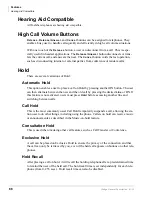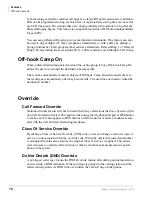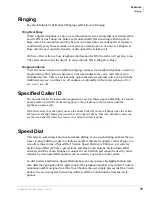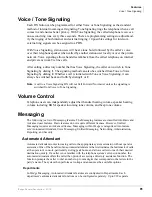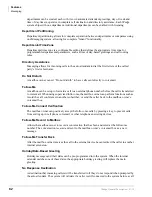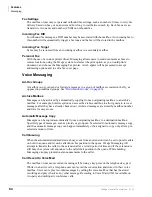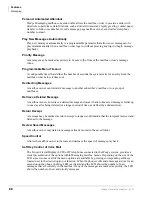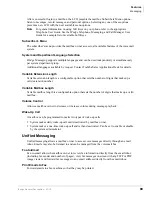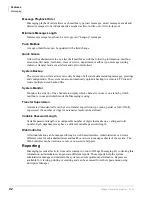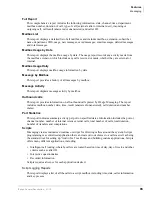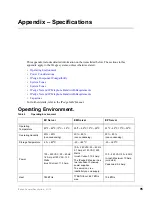
Features
Unified Communications
80
IPedge General Description 01/12
The built-in UCD standard feature is ideal for basic call processing applications not
requiring the more robust optional ACD and reporting capabilities available with the
IP
edge
system.
Unified Communications
Refer to the
Chapter 3 – Unified Communications
.
VLAN Tagging
The IPedge system supports 802.1Q Virtual Local Arean Network (VLAN) technologies.
For sites that have thousands of IP devices, VLANs can be used to separate the network
virtually rather than physically, to prevent the broadcast and other traffic from one virtual
LAN (typically a data LAN) from impairing the performance of equipment on another vir-
tual LAN (for example, a VoIP LAN) even though the devices are plugged into the same
physical network. VLAN for the IPT phone and the phone’s data port can each be pro-
grammed manually in the phone or remotely through eManager. Within or without
VLANs, 802.1P and Diffserv can be used to provide Quality of Service for voice by
allowing voice packets to be prioritized over data packets.
Note
When using 802.1Q or 802.1P it is important to ensure that all the network of the ethernet
switches and routers are capable of supporting this.
Reasons why a company might want VLANs:
•
Security - Separating systems that have sensitive data from the rest of the network decreases
the chances that people will gain access to information they are not authorized to see.
•
Projects/Special Applications - Managing a project or working with a specialized application
can be simplified by using a VLAN that brings all the required nodes together.
•
Performance/Bandwidth - Careful monitoring of network use enables the network
administrator to create VLANs that reduce the number of router hops and increase the apparent
bandwidth for network users.
•
Access Lists - Provides the network administrator with a way to control who sees the different
types of network traffic. An access list is a table the network administrator creates that lists
which addresses have access to that network.
•
Broadcasts/Traffic flow - Since a principle element of a VLAN is the fact that it does not pass
broadcast traffic to nodes that are not part of the VLAN, it automatically reduces broadcast
traffic.
Содержание ID EDGE
Страница 1: ...TOSHIBA Telecommunication Systems Division January 2012 General Description Title Page ...
Страница 6: ...This page is intentionally left blank ...
Страница 12: ...This page is intentionally left blank ...
Страница 24: ...This page is intentionally left blank ...
Страница 128: ...This page is intentionally left blank ...
Страница 134: ...This page is intentionally left blank ...
Страница 142: ...This is the last page of the document ...

